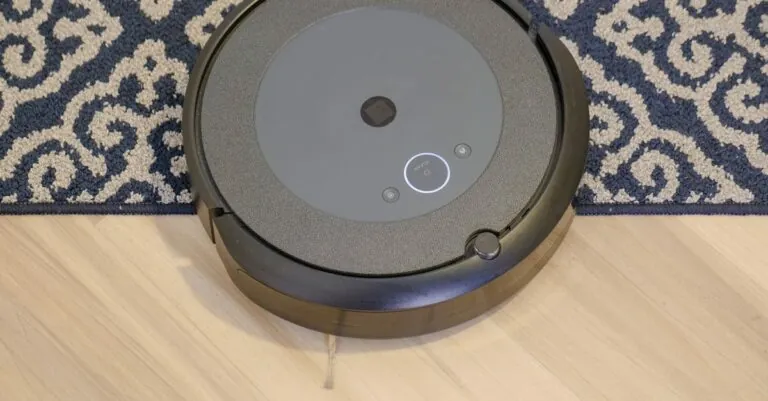In a world where even your toaster can send you a text, smart living is more than just a trend—it’s a lifestyle revolution. Imagine waking up to a home that knows your coffee preference better than your best friend. With the right gadgets and a sprinkle of tech-savvy magic, everyday tasks can transform from mundane to marvelously efficient.
Table of Contents
ToggleWhat Is Smart Living?
Smart living refers to a lifestyle that integrates advanced technology into everyday activities. This approach enhances convenience and optimizes resource management within homes and communities. Smart homes utilize devices like thermostats, lights, and security systems that connect to the internet. These devices allow for remote monitoring and control, making daily tasks smoother.
In a smart living environment, automation is key. For example, smart thermostats can learn individual temperature preferences and adjust settings accordingly. This capability significantly improves energy efficiency, leading to savings on utility bills. Smart appliances streamline chores by offering features like programmable settings and remote access, allowing users to control functions from their smartphones.
Data collected from smart devices also provides insights into usage patterns. This information helps users make informed decisions regarding energy consumption and appliance maintenance. Additionally, smart living encompasses not only home technologies but also smart city initiatives. These initiatives aim to improve transportation, waste management, and public safety through integrated technology solutions.
Social interaction plays a vital role in smart living. Digital platforms enable communication and support among residents, creating a sense of community. As more people adopt smart living practices, the potential for collaboration and shared resource management increases.
Smart living represents a transformative shift towards a more efficient, responsive way of life. Embracing this lifestyle leads to numerous benefits that promote sustainability while enhancing overall quality of life.
Benefits of Smart Living
Smart living provides notable advantages that significantly impact daily life. This lifestyle emphasizes the seamless integration of technology to foster convenience and improve security.
Increased Convenience
Smart living enhances everyday tasks through automation and connectivity. Smart appliances allow users to control settings remotely, reducing time spent on chores. Voice-activated devices facilitate hands-free operation of gadgets, making it easier to multitask. Programmable systems learn individual preferences, adjusting settings automatically for optimal comfort. Insights gathered from usage patterns inform better decision-making regarding household management. Convenience increases with remote access capabilities, allowing individuals to monitor home functions from anywhere. Overall, a smarter home leads to greater efficiency and satisfaction.
Enhanced Security
Enhanced security measures play a vital role in smart living. Smart homes incorporate advanced security systems, including cameras and motion sensors, that provide real-time monitoring. Notifications regarding unusual activities alert homeowners instantly, enabling prompt responses. Access control features allow users to manage entry remotely, ensuring safety from unauthorized visitors. Integration with smart locks enhances security by allowing keyless entry options while tracking access logs. Data encryption safeguards information, protecting against cyber threats. Consequently, smart living environments create a secure space, providing peace of mind for residents.
Popular Smart Living Technologies
Smart living technologies transform daily routines and enhance overall quality of life. Various devices and systems streamline tasks and improve safety through connectivity and automation.
Smart Home Devices
Smart home devices increase convenience and efficiency in households. Smart thermostats adjust heating and cooling based on user habits, optimizing energy use. Lighting systems enable remote control, allowing users to set moods or schedules from anywhere. Home security systems, including cameras and smart locks, provide real-time alerts and remote monitoring for peace of mind. Smart appliances, such as refrigerators and washing machines, offer programmable settings and notifications, making chores easier to manage. Data collected from these devices produces valuable insights, helping users understand energy consumption patterns.
Wearable Technology
Wearable technology integrates into daily life by promoting health and fitness. Smartwatches track physical activity, heart rate, and sleep patterns, helping individuals monitor their well-being. Fitness trackers provide personalized insights and reminders, encouraging users to reach health goals. Some devices allow for seamless integration with smart home systems, enabling users to control home settings directly from their wrists. Health-monitoring wearables can alert users to potential medical issues, enhancing preventive care and overall health management. Additionally, many of these devices support connectivity with smartphones, ensuring users stay informed on the go.
Challenges of Smart Living
Smart living offers numerous advantages, but it also presents challenges that users must navigate.
Privacy Concerns
Privacy concerns frequently arise with smart living technologies. Data collection from connected devices often includes personal information that may be vulnerable to breaches. Potential threats can lead to unauthorized access to sensitive data, compromising user security. Users may feel exposed, especially when devices continuously monitor their habits. Smart device manufacturers often face scrutiny regarding their data protection policies. Ensuring robust security measures becomes essential for minimizing risks. Users can enhance their privacy by reviewing device settings and adjusting sharing preferences.
Compatibility Issues
Compatibility issues pose significant challenges for smart living. Devices from different manufacturers might not seamlessly integrate with each other, causing frustration. Smart home ecosystems often require specific products to function effectively together. Users may struggle with setting up and managing multiple devices from various brands. Connectivity problems can arise due to differing communication protocols, complicating user experiences. Ensuring compatibility often necessitates thorough research before purchasing new devices. Successful integration can lead to a cohesive smart living environment that performs optimally.
Future of Smart Living
Emerging technologies are shaping the future of smart living in profound ways. Artificial intelligence plays a pivotal role, predicting user preferences and adjusting settings automatically. Voice-activated assistants will dominate households, making interaction with devices more intuitive and hands-free.
Innovative advancements in renewable energy integration support sustainable living. Solar panels equipped with smart technology optimize energy consumption, reducing reliance on non-renewable sources. Battery storage systems enable excess energy to be stored and used during peak hours, enhancing efficiency.
Smart home ecosystems are evolving, allowing seamless communication among devices. Appliances designed to work together create a more cohesive living experience. IoT connections facilitate data exchange, providing homeowners with real-time insights on energy use and maintenance needs.
Health and wellness continue to gain prominence in smart living spaces. Sensors monitoring indoor air quality contribute to a healthier environment, while wearables track physical activity, promoting fitness. Integration between smart homes and healthcare systems offers customized health recommendations.
Community-wide initiatives will drive the development of smart cities. Intelligent transportation systems streamline traffic flow and reduce congestion. Smart waste management technologies optimize collection routes and promote recycling efforts.
Security technologies are advancing, offering enhanced protection for residents. Facial recognition doorbells and smart locks utilize biometric data to grant access, significantly improving safety. Automated surveillance systems provide real-time alerts, ensuring peace of mind.
A transformation is underway as smart living becomes more prevalent. Enhanced connectivity, sustainability, and automation redefine how individuals interact with their environments. With these innovations emerging, the future of smart living promises increased efficiency and improved quality of life for all.
Smart living is more than just a trend; it’s a fundamental shift in how individuals approach their daily lives. By embracing technology, people can enhance convenience, efficiency, and security within their homes. The integration of smart devices not only streamlines tasks but also promotes sustainable practices that benefit the environment.
As technology continues to evolve, the potential for smart living will only expand. Emerging innovations will further refine how individuals interact with their surroundings, making life even more intuitive and connected. With a focus on community and well-being, smart living is set to redefine modern lifestyles for years to come.








